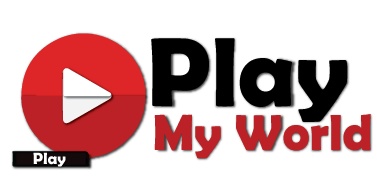Introduction
The traditional corporate structure relies heavily on quantifiable performance metrics, such as productivity numbers, revenue goals, and strict key performance indicators (KPIs). However, as the workplace evolves, organizations are recognizing the limitations of this rigid, number-driven approach. This has led to the emergence of Crew Disquantified Org, a modern framework that prioritizes collaboration, adaptability, and qualitative success over strict numerical assessments.
This model redefines organizational efficiency by focusing on teamwork, decentralized decision-making, and human-centric values. Unlike conventional structures where hierarchy dominates, Crew Disquantified Org encourages fluidity and shared responsibility. This article explores the meaning, principles, benefits, challenges, and implementation of this approach, offering organizations a roadmap to transition towards a more dynamic and efficient workplace.
Understanding Crew Disquantified Org
Definition and Concept
Crew Disquantified Org refers to an organizational model where workplace success is not measured solely by numerical metrics, but rather by team collaboration, problem-solving abilities, and long-term impact. The key elements of this model are:
- Crew: A group of individuals working together towards a shared goal, emphasizing teamwork over individual competition.
- Disquantified: Moving away from rigid quantification, meaning success is defined through broader, more meaningful outcomes rather than just numbers.
- Org (Organization): A structured business or entity that operates with a clear purpose, adapting to modern work dynamics.
This approach is especially relevant in industries where creativity, adaptability, and problem-solving play a critical role. Rather than pushing employees to meet strict quotas or arbitrary targets, it encourages a more holistic, purpose-driven work environment.
Key Differences from Traditional Organizations
| Aspect | Traditional Organizations | Crew Disquantified Org |
|---|---|---|
| Performance Measurement | Based on KPIs, quotas, and output numbers. | Assessed through team collaboration, creativity, and innovation. |
| Decision-Making | Centralized, hierarchical approval processes. | Decentralized, empowering teams to make decisions. |
| Work Environment | Competitive, rigid, and structured. | Flexible, fluid, and adaptable. |
| Success Metrics | Profit and efficiency-driven. | Long-term impact, employee satisfaction, and innovation. |
This model redefines the way organizations measure progress, making them more responsive to change while maintaining high levels of employee engagement.
Also Read: WPDevShed: The Ultimate Resource for WordPress Development and Optimization
Core Principles of Crew Disquantified Org
Autonomy and Decentralized Decision-Making
One of the fundamental aspects of Crew Disquantified Org is the removal of excessive managerial oversight. Instead of hierarchical approvals, teams are given the authority to make decisions regarding their projects, fostering accountability and innovation.
Teamwork and Collective Growth
Unlike traditional structures where individual achievements are prioritized, this model rewards team success. This creates a more supportive and cooperative work culture, where employees work toward shared objectives rather than competing against each other.
Adaptability and Continuous Learning
Organizations operating under this model are more agile and quickly adapt to market changes. Employees are encouraged to engage in ongoing learning, making them more resilient and future-ready.
Eliminating Rigid Performance Metrics
Rather than relying on strict numbers, organizations measure success through:
- Employee well-being and job satisfaction
- Innovative contributions
- The long-term value of projects
- The overall impact on customers and society
This allows for a more meaningful evaluation of performance beyond just productivity figures.
Purpose-Driven Work
Employees feel more motivated and engaged when their work is tied to a broader purpose rather than just revenue goals. Crew Disquantified Org places greater emphasis on meaningful contributions, ensuring employees are aligned with the company’s vision and mission.
How to Implement Crew Disquantified Org in an Organization
Step 1: Assess the Current Structure
- Identify bureaucratic obstacles that slow down decision-making.
- Evaluate how performance is currently measured and identify areas where qualitative assessments can be introduced.
Step 2: Shift from Individual KPIs to Team-Based Goals
- Replace individual success metrics with collaborative milestones.
- Encourage peer-to-peer feedback rather than top-down evaluations.
Step 3: Encourage Autonomy in Teams
- Allow teams to make independent decisions rather than requiring constant managerial approval.
- Establish clear roles and responsibilities while still maintaining flexibility.
Step 4: Promote a Culture of Learning and Growth
- Offer continuous learning opportunities through training programs and mentorship.
- Encourage employees to develop new skills that align with long-term company goals.
Step 5: Create Transparent Communication Channels
- Encourage open and honest discussions within teams.
- Reduce hierarchical barriers to allow employees to share ideas freely.
Step 6: Monitor Progress and Adapt
- Regularly assess what is working well and what needs improvement.
- Gather feedback from employees and make necessary adjustments to refine workflows.
Also Read: iZoneMedia360.com Entrepreneur: A Complete Guide to Digital Business Growth
Benefits of Crew Disquantified Org
Greater Employee Satisfaction
- Employees feel more engaged and motivated due to autonomy and team collaboration.
- Reduces workplace stress by eliminating unnecessary pressure from rigid performance evaluations.
Faster Innovation and Creativity
- Teams have more freedom to explore ideas, leading to increased innovation.
- Less bureaucracy means faster implementation of new projects.
Stronger Team Collaboration
- Encourages a culture of mutual support and shared success.
- Eliminates competition-driven workplaces that often lead to burnout and disengagement.
Better Adaptability to Market Changes
- Companies can pivot strategies quickly without getting stuck in rigid protocols.
- Reduces dependency on long approval chains, making the organization more agile.
Challenges and How to Overcome Them
Resistance to Change
Many employees and managers are accustomed to traditional corporate structures. To overcome this:
- Provide education and training on the benefits of this model.
- Implement changes gradually instead of all at once.
Maintaining Accountability
With increased autonomy, maintaining accountability can be challenging. Solutions include:
- Establishing team-driven performance reviews.
- Encouraging self-regulation within teams.
Measuring Success Without Strict Metrics
Since KPIs are minimized, organizations must:
- Use impact-based evaluation rather than output-focused measurement.
- Collect qualitative feedback from employees, customers, and stakeholders.
Conclusion
Crew Disquantified Org represents a new way of structuring businesses, one that moves away from rigid performance metrics and focuses on collaboration, adaptability, and meaningful work. By decentralizing decision-making, promoting teamwork, and eliminating rigid numerical assessments, organizations can build a more flexible, motivated, and high-performing workforce.
While implementing this model requires a shift in mindset, the long-term benefits far outweigh the initial challenges. Companies that adopt Crew Disquantified Org will be better positioned for innovation, resilience, and long-term success in an ever-changing business landscape.




